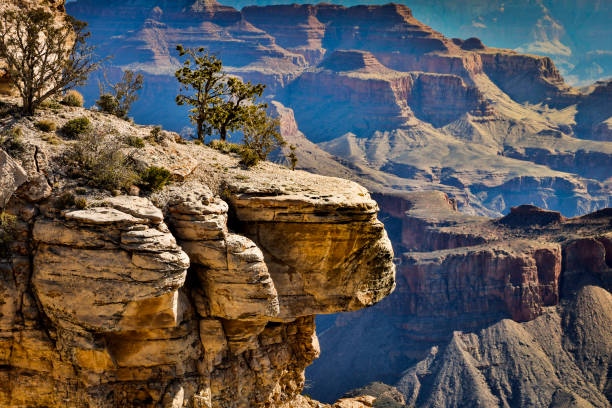Plateau Mountains
- Get link
- X
- Other Apps
Plateau mountains are fascinating geological formations that combine the characteristics of both plateaus and mountains. They are elevated landforms with relatively flat or gently sloping surfaces that are surrounded by steep slopes or cliffs. In this article, we will delve into the formation, characteristics, and examples of plateau mountains.
Formation of Plateau Mountains:
Plateau mountains are typically formed through a combination of tectonic forces, erosion, and volcanic activity. The process of their formation can be described as follows:
1. Tectonic Uplift: Plateau mountains often originate from the uplift of large blocks of crust due to tectonic forces. These forces can include the collision of continental plates, the folding and faulting of the Earth's crust, or the movement of tectonic plates.
2. Erosion and Weathering: Once the plateau region is uplifted, erosion and weathering processes start to shape the landscape. Over time, water, wind, and ice erode the uplifted region, creating deep valleys, canyons, and steep slopes along the edges of the plateau. The erosive forces gradually expose the underlying rock layers and shape the distinctive features of the plateau mountains.
3. Volcanic Activity: In some cases, plateau mountains can also be formed through volcanic activity. Volcanic eruptions deposit lava flows and volcanic ash, which can accumulate and build up over time, creating a flat or gently sloping surface atop the volcanic plateau. The volcanic activity contributes to the unique geological characteristics of these mountains.
Characteristics of Plateau Mountains:
Plateau mountains possess several distinct characteristics that set them apart from other types of mountains. Here are some key features:
1. Flat or Gently Sloping Surface: The most noticeable characteristic of plateau mountains is their flat or gently sloping surface at the top. This flat area, known as the plateau, contrasts with the steep slopes or cliffs that surround it.
2. Steep Escarpments: Plateau mountains are bordered by steep escarpments or cliffs that mark the transition between the elevated plateau and the lower surrounding areas. These escarpments can be a result of tectonic uplift or erosional processes.
3. Erosional Features: The erosion of plateau mountains creates a variety of distinctive landforms. Deep valleys, canyons, gorges, and waterfalls often form along the edges of the plateau due to the erosive forces of rivers and streams. These erosional features add to the scenic beauty of plateau mountains.
4. Diverse Geological Composition: Plateau mountains can consist of various types of rock, depending on their geological history. Sedimentary rocks, such as sandstone, limestone, or shale, are commonly found in plateau mountains. However, volcanic plateau mountains can also contain layers of volcanic rock, including basalt or andesite.
Examples of Plateau Mountains:
There are several notable examples of plateau mountains around the world, each with its unique characteristics and geological history. Here are a few prominent examples:
1. Colorado Plateau, United States: The Colorado Plateau is a vast region located in the southwestern United States. It is characterized by its extensive plateaus, deep canyons (including the Grand Canyon), and stunning rock formations such as Monument Valley. The Colorado Plateau is composed of sedimentary rocks, and its formation can be attributed to tectonic uplift and subsequent erosion.
2. Deccan Plateau, India: The Deccan Plateau is a large plateau in central and southern India. It is primarily composed of basalt, a volcanic rock, and is known for its extensive lava flows. The Deccan Plateau was formed as a result of volcanic activity that occurred around 65 million years ago.
3. Ethiopian Highlands, Ethiopia: The Ethiopian Highlands are a rugged mountainous region in eastern Africa. This plateau region is characterized by its steep escarpments, deep valleys, and high peaks, including Ras Dashen, the highest mountain in Ethiopia. The Ethiopian Highlands are composed of volcanic rocks and are the result of tectonic uplift and extensive volcanic activity.
4. Colorado Plateau, United States: The Colorado Plateau is a vast region located in the southwestern United States. It is characterized by its extensive plateaus, deep canyons (including the Grand Canyon), and stunning rock formations such as Monument Valley. The Colorado Plateau is composed of sedimentary rocks, and its formation can be attributed to tectonic uplift and subsequent erosion.
These examples highlight the diverse range of plateau mountains found across the globe. Each of these mountains tells a story of geological processes, tectonic forces, and erosion that have shaped the Earth's surface over millions of years.
In conclusion, plateau mountains are unique geological formations that combine the characteristics of plateaus and mountains. They are formed through tectonic uplift, erosion, and volcanic activity, resulting in a flat or gently sloping surface surrounded by steep escarpments. Plateau mountains exhibit distinct features such as their flat or gently sloping surface, steep cliffs or escarpments, erosional landforms, and diverse geological composition. Examples like the Colorado Plateau, Deccan Plateau, Ethiopian Highlands, and Tibetan Plateau showcase the beauty and geological significance of plateau mountains. These mountains provide valuable insights into the Earth's dynamic processes and serve as natural landmarks for exploration, scientific research, and tourism.
- Get link
- X
- Other Apps

Comments
Post a Comment